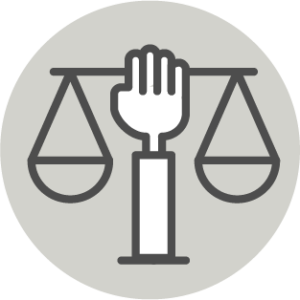Overview

Philosophies and Approaches
Empowerment Evaluation
Empowering communities with tools used for self-determination
Description
Empowerment evaluation is a stakeholder involvement approach designed to provide groups with the tools and knowledge they need to monitor and evaluate their own performance and accomplish their goals. Empowerment evaluation focuses on fostering self-determination and sustainability. It is particularly suited to the evaluation of comprehensive community-based initiatives or place-based initiatives. The definition has since been updated to include the following: “An evaluation approach that aims to increase the probability of achieving program success by: (1) providing program stakeholders with tools for assessing the planning, implementation, and self-evaluation of their program; and (2) mainstreaming evaluation as part of the planning and management of the program/organization” (Thomas & Campbell, 2020).
Unique Contributions
It has been said that “one only need to desire a better life” to use empowerment evaluation (Thomas & Campbell, 2020). Thus, empowerment evaluators play a “coaching” role to help communities obtain their own self-determination. They provide communities guidance to help them track progress based on their own theory of action. The evaluators help the group develop evaluation and monitoring tools and hand them off so that the group is vested in the process, has group members hold each other accountable for results, and increases the effort’s sustainability.
History
Zimmerman et al.’s (1992) framework predates Fetterman in which the authors posit a theoretical model of psychological empowerment that focuses on intrapersonal, interactional, and behavioral components. By extension, Fetterman’s connection to empowerment evaluation was inspired by work for the U.S. Department of Education that focused on children with disabilities who were particularly self-determined. This later expanded to historically marginalized and excluded populations, as well as low-income populations (Fetterman et al., 2015). Empowerment evaluation was introduced in a presidential address at the American Evaluation Association (Fetterman, 1994). It was influenced by action anthropology, community psychology, and organizational transformation and development. Empowerment evaluation relies on the reciprocal relationship between theories of action and use at every step in the process. A theory of action is the espoused operating theory about how a program or organization works. Its evolving conceptual and methodological specificity is documented in a series of books concerning the approach (Fetterman et al., 1996; Fetterman & Wandersman, 2004; Fetterman et al., 2015).
PRINCIPLES
 Promotion of equity and social justice; attendance to issues of power
Promotion of equity and social justice; attendance to issues of power
Social justice is one of the approach’s 10 principles — evaluation can and should be used to address social inequities in society. A key component is inclusion, ensuring that all voices, particularly those most impacted, are heard and valued (Fetterman et al., 2015). Indeed, Fetterman et al., (2015) expanded this to “transformative empowerment evaluation,” which specifically focuses on psychological, social, and what he refers to as the “political power of liberation.” Empowerment Evaluation has long addressed the ability to engage in social redress (Mithaug as cited in Fetterman et al.,1996) by enabling capacity building and increased opportunity. This is prominent throughout empowerment evaluation, which additionally seeks to close the gap between evaluator and partners; empowerment evaluators and partners learn from one another, thereby closing the power gap between them (Andrews, 1996).
 Engagement of partners and community members, particularly those with less social power, during all phases of the evaluation
Engagement of partners and community members, particularly those with less social power, during all phases of the evaluation
Specifically, the 10 principles of empowerment evaluation are geared toward empowering the key stakeholder communities to conceptualize, lead, and perform their own evaluation work. Key principles include (1) community ownership – empowerment evaluation values and facilitates community control, and use and sustainability are dependent on a sense of ownership; (2) inclusion – empowerment evaluation invites involvement, participation and diversity; contributions come from all levels and walks of life; (3) community knowledge – empowerment evaluation respects and values community knowledge; (4) and capacity building – empowerment evaluation is designed to enhance stakeholders’ ability to conduct an evaluation and to improve program planning and implementation (Fetterman et al., 2015).
 Composition of evaluation team and reflection on assumptions and biases
Composition of evaluation team and reflection on assumptions and biases
Empowerment evaluation is designed to be community and stakeholder owned, in which communities and partners self-determine processes and outcomes, and measure against those. Thus, the composition of the evaluation team is comprised primarily of community partners/stakeholders and an evaluation coach/facilitator. Empowerment evaluation is described as being driven by group process — the group serves as its own review and accountability group. The group learns from each other, serving as their own peer review group (Fetterman & Wandersman, 2004). Empowerment evaluation is designed to empower stakeholders to be able to do their own evaluation, capacity building, and thinking through of the values (and considerations) that underlie the evaluation.
 Consideration of cultural and historical contexts and different worldviews
Consideration of cultural and historical contexts and different worldviews
Although culture and context are not specifically mentioned, empowerment evaluation’s grounding has been in ethnography and ethnographic research. Additionally, the overarching and guiding principles of being community-owned and based upon community knowledge are closely aligned with grounding in culture and context. To that end, the history and background of communities must be part of the evaluation, if honoring community knowledge and capacity. In an empowerment evaluation framework, centering community knowledge and community ownership is foundational to self-determination (Fetterman et al., 2018).
 Intentional methods and thoughtful data collection
Intentional methods and thoughtful data collection
Methods and data collection are designed to place evaluation in the hands of community and staff members to facilitate ownership, enhance credibility and promote action. Communities are involved in the development of tools designed to help with assessment, planning, implementation, and self-evaluation of their program. All methods, including those that are innovative, are considered viable if appropriate for the situation (Fetterman et al., 2015). Although the use of quasi-experimental designs is considered possible and probable, experimental designs are not necessarily mentioned. That said, there is no expectation that under the appropriate condition, an experimental design would be discounted.
 Intentional analysis and inclusive interpretation
Intentional analysis and inclusive interpretation
Through an empowerment process, people learn to think evaluatively (Patton, 2002 as cited in Fetterman et al., 2015). This process makes them more likely to make decisions and take actions based on their evaluation data. Empowerment evaluation is designed to “improve their programs using a form of self-evaluation and reflection. Participants continually assess their progress toward self-determined goals and shape plans and strategies in accordance with the community assessment” (Thomas & Campbell, 2020).
 Accessible and actionable evaluation findings
Accessible and actionable evaluation findings
Empowerment evaluation has three steps to guide communities through their own self-assessment process and an evaluation dashboard to help them monitor their own progress toward desired goals: (1) establishing the mission in which groups come to agreement about their values and visions; (2) taking staking stock, in which the group evaluates its vision and mission; and (3) planning for the future in which the group plans for future activities, monitoring, and what will be considered as credible evidence (Fetterman, 2012).
© 2022 SLP4i and The Colorado Trust, authored by Katrina Bledsoe, Felisa Gonzales, and Blanca Guillen-Woods. This work is protected by copyright laws. No permission is required for its non-commercial use, provided that the authors are credited and cited.
For full citation use: Bledsoe, K., Gonzales, F., & Guillen-Woods, B*. (2022). The Eval Matrix©. Strategy Learning Partners for Innovation https://slp4i.com/the-eval-matrix.
*These authors contributed equally to this work with support from the Annie E. Casey Foundation and The Colorado Trust.
The Eval Matrix site designed by KarBel Multimedia
